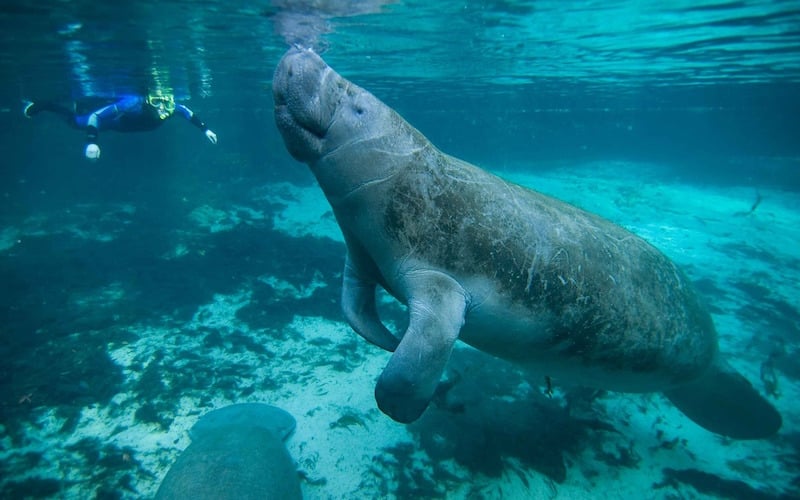Manatee Scientific Research
There are still many unanswered questions about the manatee even though they has been plenty of research about them. For example we don’t understand why some manatee mothers abandon their calf. For the most part, they have an amazing maternal instinct and do all they can to care for their young.
We also don’t understand how they are able to make the variety of noises the offer for communication. It could be their larynx but that is just an educated guess at this point. This is an area of study that is difficult as the sounds are believed to be internal and they don’t want to risk the health of manatees to investigate that further.
Perhaps the biggest question that still remains in regards to manatee research is just how many of them are there left in the world? The number is low enough for them to be considered vulnerable. However, it is very hard to get an exact number of them due to how frequent they move. The fact that they have such a diverse habitat around the world is also a barrier.
The fact that their natural habitat is shared with humans, mainly humans on boats, is a serious problem. There has been a great deal of research about this in the hope that they can protect certain areas from so many accidents occurring. For example in areas of Florida only those that own beach front property can have their boats in those shorelines. Everyone else must stay out of those areas.
We do know that manatees can live in either saltwater or freshwater. We also know that the temperature has to be at least 60 degrees Fahrenheit in order for them to survive in it. These are amazingly gentle creatures which allows for some up close and personal interaction. This is done by people wishing to swim with them as well as researchers that are looking for answers.
The research on manatees shows that they can reproduce at any time of the year. There is no set mating season which is unusual. The females will have one calf every 2 to 5 years, with an occasional set of twins in the mix. They can live to be up to 60 years of age in the wild with the right conditions. In captivity they may live to be about 50 years of age. One of the main reasons they don’t live as long in captivity though is because many of them are sick or injured when they are taken in.
Early reports of manatees indicated they lived in small groups. However, that was later changed to them being loners. With the exception of mothers and calves most of them are on their own. These big groups though do occur when several males join a female or two in the hopes of mating with them. This is also the subject of migration where there will be very large groups of them all moving to the same destination.
Compared to many other animals in the world, the manatee lives a very basic and even boring existence. They can spend up to 8 hours a day eating and then up to 12 of it sleeping. The few remaining hours they spend playing, communicating with others, traveling if it is time for migration, and investigating anything around them that peaks their curiosity.
Perhaps the most amazing thing about the manatee is the fact that they can travel such large distances when it is time to migrate. This complete this process each year in the winter to get to warmer bodies of water. Most of them can be found along the Florida coastline. Research shows that there is no real social order among manatees and they are able to migrate without any tension.







